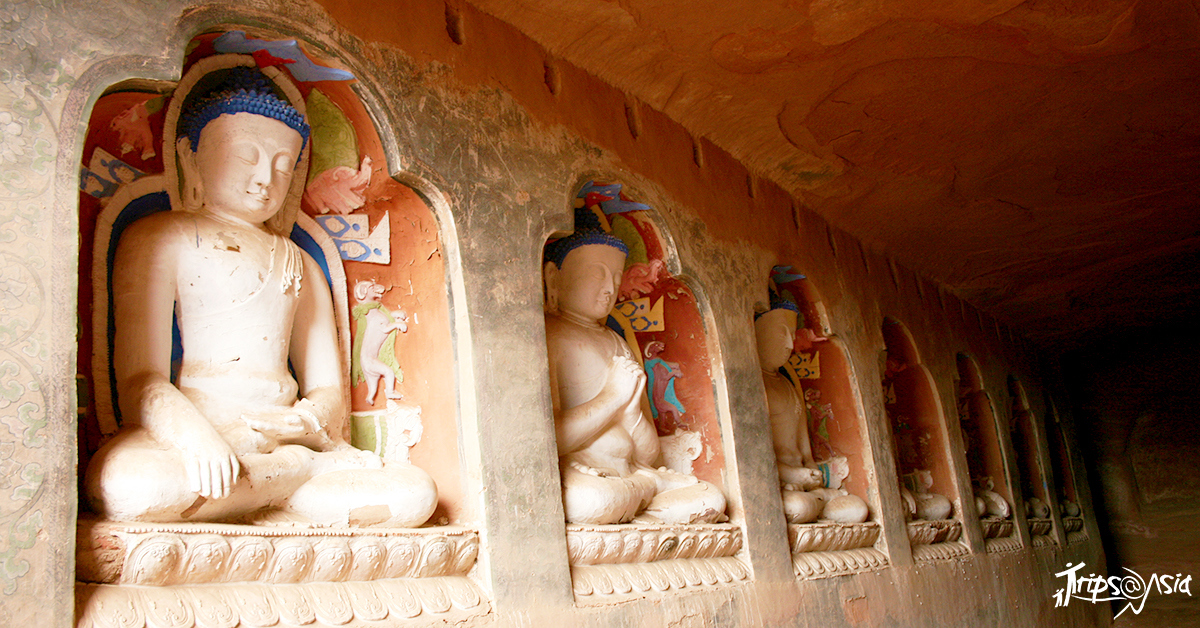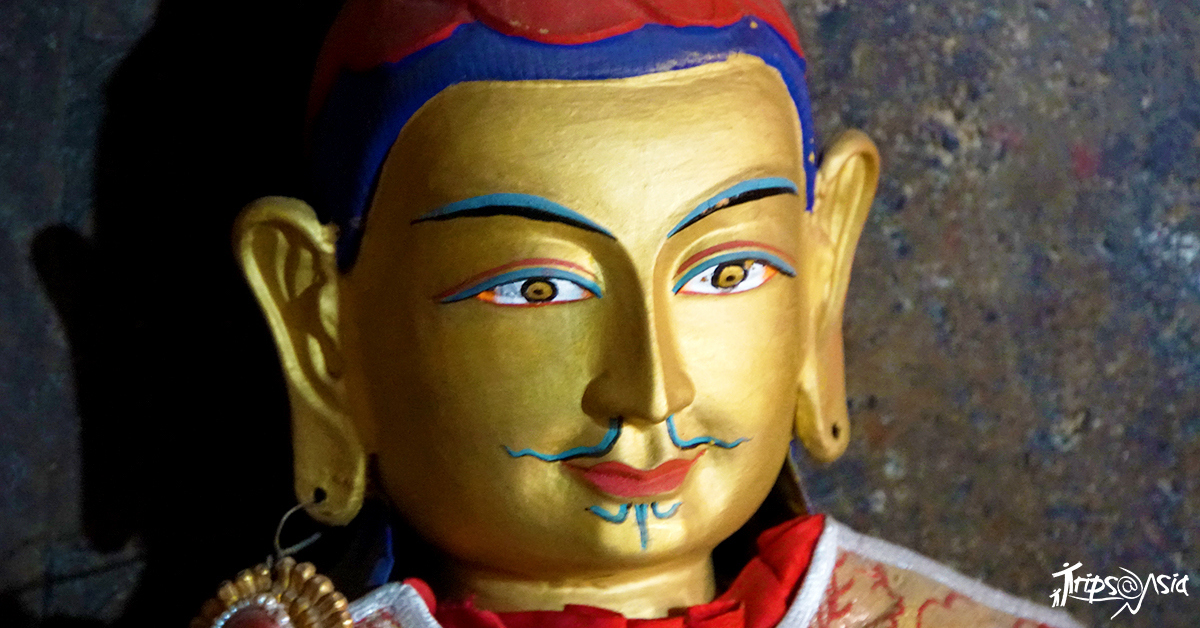Newsletters Trips@Asia
Buddhism: A Chameleon Faith
After wandering for days, a man found himself near a large peepul tree. He decided to sit beneath it and meditate upon his questions. Before long, he felt as if he was floating in space, seeing the world from far, far away. He saw himself. And then, he found an answer. This man would come to be known as Buddha. The answers he found would develop into a religion that amassed half a billion believers worldwide, changing its true color in the process.

Buddhism emerged from the slums of India. Its first doctrine starts with declaring that "Life is full of suffering." For many, this idea may feel depressing. But for those living in the slums then, and probably even now, it hits close to home. As a friend of mine once described, "The greatest aspiration of anyone born there is to die." Like Hinduism, Buddhism believes in the cycle of rebirth. It states that whoever is born in this world is doomed to return endlessly, and in each life, suffering is inevitable. We will feel it either physically ŌĆō through hunger, sickness, poverty, and death ŌĆō or emotionally ŌĆō by losing loved ones or not getting what we desired. The only way to truly escape from suffering is to abandon the three key traits that bring it upon us in the first place ŌĆō greed, ignorance, and attachment. If we free ourselves from these qualities, we will be led from the pain of suffering and rebirth towards the path of enlightenment.

It is essential to point out that Buddhism doesn't have a divine entity that decides an individual's fate, unlike other major religions. It is your actions that determine your future. There is no god to judge our good and bad deeds, but only karma ŌĆō the law of cause and effect. Like a scale, our karma balances itself automatically upon death, and the result determines whether we will be born in a fortunate situation or not. To be born as a human is considered lucky. Unlike animals, a man has a certain amount of freewill to adjust his actions to influence his future. Buddha frequently reminded his followers that no one, in heaven or on earth, could save them from the consequences of their actions. He urged them to be virtuous and compassionate, not to please some Supreme God, but to become their higher self.

Strictly speaking, Buddhism was never meant to be a religion, but rather a philosophy offering the individual a means to follow if he wishes to leave the karmic cycle. Buddha only established the first community of monks and nuns so that his disciples would look after each other after his death. These early monks traveled from village to village, offering teachings for alms. It took four centuries after Buddha's death for his teachings to spread beyond north India. Hindu Emperor Ashoka of the Maurya dynasty embraced Buddhism after winning a bloody war that claimed the lives of over 150,000 people. He sent Buddhist missionaries to all parts of his empire ŌĆō including modern-day Iran, Pakistan, and India ŌĆō and as far away as Srilanka, Egypt and Greece. Under Ashoka's rule, Buddhism established its stronghold in Pakistan and spread west from there to central Asia. Following the beginning of trade along the Silk Road, Buddhist missionaries from Pakistan followed merchants into northern China in the 1st century CE. At the same time, monks from India traveled, mostly by sea, to southern China and Southeast Asia, including Indonesia. In China, Buddhism had developed into several schools, including the Pure Land Buddhism or Zen, which eliminated the challenging meditation practices used by Indians. Pure Land eventually reached the Korean Peninsula and Japan, where the teachings and practices were further simplified so that anyone could cope with them.

Buddhism came to Tibet in the 7th century CE, during the reign of Songtsen Gampo, the first Tibetan king. It was right after Songtsen Gampo had united the warring tribes in the Tibetan Plateau into one empire. To solidify his power, the king married a Nepali princess and a Chinese princess of the Tang dynasty. The princesses introduced Buddhism to the court and influenced the king to spread the religion in his kingdom to unify his people. At the time, Tibetans practiced a local belief called Bon that resembled Central Asia's shamanic practices. As nomadic pastoralists living in the Himalayas' shadow, their survival depended entirely on Gods' will and the forces of nature. Tibetans regularly presented offerings to the divine beings for their health and happiness. A religion preaching that your destiny is in your hands was not convincing. The king could force the new religion on his subjects by military might, but he knew it would not last. So, he decided to make Buddhism familiar to the people by adding the existing shamanistic elements. First, Songtsen Gampo validated the existence of all the deities whom the Tibetans worshipped meticulously. Then he declared that not only the spirits they pray to every day are real, but these gods guard the Dharma, the Buddhist doctrine. He gave each entity a name, a role, a form, and a myth drawn from Hinduism or the local beliefs.

That is why you find terrifying figures of gatekeepers at every monastery's entrance in Tibet: Holding swords in their hands, trampling mutilated corpses under their feet, wearing crowns adorned with skulls, and casting fear even upon the bravest man with their appearance. Their official duty is to keep evil spirits outside the temple gates and to preserve the place's purity. The less formal role is to remind the spectators that punishment will be bestowed upon those who commit sins and that no one can escape their karmic retribution, even the religious leaders. Inside the temple, you will see more statues and paintings of various deities. Some of them are real historical figures who earned a place of honor in the saints' pantheon by their wisdom and compassion. Others are fictional characters taken from Buddhist mythology. Either way, people pray to them with great admiration and offer food and money, hoping these gods will change their destiny and grant them happiness.

You may wonder how this fits with Buddha's own words, where he challenged the idea of worshiping divine entities or celestial beings. The answer is simple. When Buddhism became a religion, it adopted the camouflage function of a chameleon, changing its colors depending on the environment. In a place that worships frightening deities, Buddhism embraced them. In a country that worships the sky and mountains, Buddhism adopted the local practices ŌĆō building stone mounds and hanging silk scarves at mountain passes and peaks. In a nation where people asked shamans about their future, Buddhism copied the divination methods.

By adopting a significant amount of cultural values that existed long before Buddha meditated under the peepul tree, Buddhism made itself the dominant religion in East Asia. Possibly inspired by Buddhism's success, other religions also started embracing local customs to gain public support. The best example of such practices would be saints' culture in Latin American Catholicism and Russian Orthodoxy.
ACCROSS THE TIBETAN PLATEAU | TIBET PRIVATE TOUR
A private unique tour through the Tibetan Plateau, commonly known as the Roof of the World, during the time the Tibetan people celebrate the Shoton Festival.
View tour